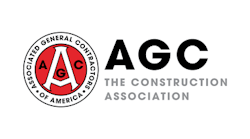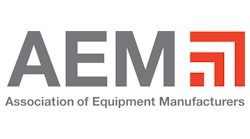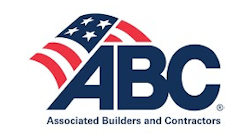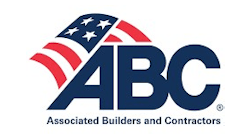Almost every contractor with a significant equipment fleet knows the company must balance working capital and cash flow requirements with the need to invest in a new and more efficient construction fleet. The contractor is often caught in a tug-of-war between their surety and their bank on one side, and the equipment needs of the field operations on the other side.
Getting the right balance in this struggle can mean the difference between success and failure for the contractor. Contractors with the right balance can obtain the equipment they need in the field and the surety bonding and capital requirements necessary for success.
The Contractor’s Financial Needs
As always, contractors need cash to fund their work on a daily, weekly, and monthly basis. Tangible working capital is the best indicator for this. Working capital is comprised of current assets (primarily cash and current receivables) less current liabilities (accounts payable, accrued expenses, billings in excess of costs, and current debt maturities). As everyone knows, equipment and other fixed assets are not included in working capital, and long-term debt does not count against working capital. Stock investments, inventory, and costs in excess of billings (under-billings) are discounted or excluded by most users of contractors’ financial statements and are not fully valued when computing tangible working capital. When analyzing the components of working capital, a contractor should simply ask this question:”Will the asset make payroll?” Old receivables, non-turning inventories, under-billings, and similar current assets do not convert to cash quickly and consequently are not available for payroll when needed.
When working capital increases, the amount of work a contractor can successfully perform also increases. More painfully, if working capital decreases, the amount of work must also decrease. Lack of tangible working capital is the number one reason for contractor failures—they simply run out of cash.
CTLs and skid steers for sale
A good rule of thumb for the amount of working capital a contractor needs is 10% of expected annual revenue. A contractor expecting to perform $50 million in volume next year should target having $5 million of working capital. The amount of work subcontracted to others, owner payment terms, retainage amount, and other factors can affect how much working capital a contractor requires. However, 10% is the best and safest benchmark for a contractor, particularly a contractor in the heavy highway and civil construction sectors. Most sureties and state DOT prequalification departments start with the 10% benchmark in computing the amount of work a contractor should perform.
The amount of “interest-bearing” debt a contractor has on hand is another very important financial consideration. As a rule of thumb, most sureties limit a contractor’s debt levels to less than 80% of equity. Debt above 100% of equity is a concern. The structure of the debt terms and the related collateral base is equally important as it affects both working capital and the amount of cash available in future years.
Debt Structure
Many contractors and some financial advisors underestimate the importance of structuring debt correctly. Most informed users of a contractor’s financial statements will see through poorly structured debt, especially surety analysts. It is common for a surety underwriter to impute certain adjustments to a contractor’s financial statements that will significantly change the amount of working capital.
Most sureties automatically impute an entry for off-balance sheet leases as if they were debt on the balance sheet. An adjustment to discount certain assets will correspondingly reduce the equity amount. Sureties also routinely reclassify so-called “13-month” debt maturities as current maturities, reducing working capital significantly. (As explained below, “13-month debt” is technically long-term due only to the maturity date, but in reality, should be treated as short-term debt.) Many contractors find out about these adjustments when it’s too late to do anything about it. This makes it critically important to choose the right lender and the proper debt structure on the front-end.
Know that the cheapest interest rate is not always the best deal or the smartest option. If debt is poorly structured and reduces the surety capacity for the contractor, the opportunity cost of losing additional construction projects will far outweigh the cost of an interest point or two.
Lines of Credit
Most contractors choose to have a line of credit as part of their debt structure. A line of credit is often utilized to provide extra cash flow during peak volume times in the month or during the year. Many sureties will give “extra credit” to a contractor who has a line of credit on standby to meet additional cash flow needs. Some state transportation departments also give extra prequalification capacity based on unused lines of credit.
Lines of credit normally provided by banks and other traditional lenders are often collateralized by the same working capital components that the surety needs to collateralize surety bonds. Some contractors, and even some bankers, are unaware that the surety has the first right to receivables on bonded contracts. It’s a mistake to believe that a bank can lend money using bonded contract receivables as collateral, unless the bank takes a subordinated position to the surety. Most banks are not willing to accept a junior position on the receivables. Therefore, lines of credit should be collateralized by equipment rather than working capital components. Using equipment to collateralize a line of credit is preferred by both contractors and sureties and validates reporting balances as long-term liabilities.
Most traditional lines of credit are structured as short-term debt. This type of product counts against working capital and also increases debt levels. Because of this, many banks offer “13-month” debt maturities, under the assertion that debt with a balloon payment more than 12 months after the balance sheet is automatically considered long-term debt. In most cases, 13-month debt is not considered long-term debt, including the following circumstances:
- If the maturity date of the debt is less than 12 months past the date financial statements are issued by the CPA, the debt is no longer long term.
- If the maturity date of the debt is less than the working days of the bonded project, the surety will normally reclassify the debt as current.
- If the loan agreement contains an “on demand” provision, the debt is callable at the bank’s discretion, and therefore is not long term since the contractor does not fully control the payment schedule.
- If the contractor is in default, or could likely be in default subsequently, the debt must be classified as current if the agreement allows the bank to call the loan upon default.
- If a line of credit is collateralized primarily by short-term assets (receivables, investments, inventory, and such), the loan could be considered as short term regardless of the maturity date. Because these types of assets are temporary in nature, the ability to repay the loan is also subject to the availability of these types of assets.
Lines of credit that are secured by equipment and contain term-out provisions are preferable for equipment intensive contractors. The loan is renewable annually based on appraised value and adjusted for purchases and dispositions. The line availability also “depreciates” at a predetermined rate each month. If the loan is not renewed or if a default occurs, the loan becomes payable on an installment basis (usually 36 months), rather than in a single balloon payment.
Choosing the Right Lender
Whether a contractor is choosing a subcontractor, a contractor owner or a lender, it’s always better to work with someone who is experienced and who knows the industry. Many contractors now turn to “captive” lenders rather than borrowing from traditional full-service banks.
Captive lenders understand the construction industry and the needs of contractors. They are experts at knowing the value of an equipment fleet and determining a fair value for those assets. They understand a contractor’s need for specialized equipment for certain contracts, and they are familiar with the surety’s requirements for working capital, collateral, and debt structure. Adding a captive lender to a contractor’s existing banking relationship will improve the capital structure and add value to the company.
Selecting the right lender is important to both the construction contractor and the contractor’s surety. Maximizing the value of the collateral base and structuring the terms of the loan to meet the operational requirements of the contractor are vital to success. All equipment intensive contractors should consider captive lenders as a source of capital to add to their traditional banking relationships.


















